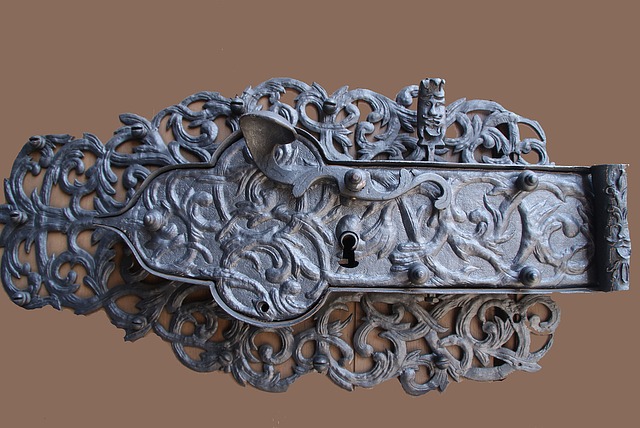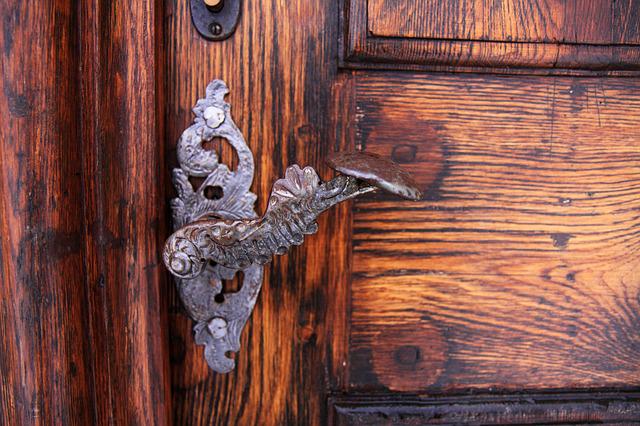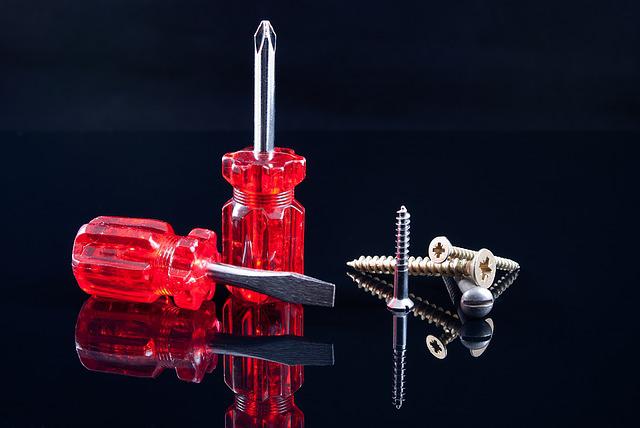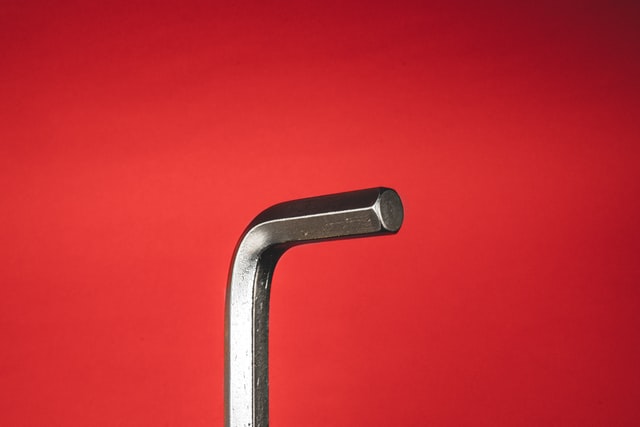Many pieces of Antique furniture come with locks, however, many of those are missing the main element. Keys are one of those items that seem to be lost or misplaced more often than not.
Contents
Of course, there are times that it does not matter if you have the key or not. Skeleton keys work in many of these vintage or Antique locks. However, it is not so easy to find a skeleton key any longer.
What can you do when you purchase an Antique with a lock, and the cabinet is locked with no key? There are ways to open an Antique lock without a key.
Skeleton Keys

Skeleton keys were known as the bit and barrel type of key. They have three distinct parts; the bit, the barrel and the bow. The bow is the part of the key that you would hold in between your fingers. The barrel is the straight piece in the centre that connects the ends together. The bit is the portion that you would stick inside the lock to open the lock.
If you were to locate a skeleton key at a store, please understand that they are reproductions. However, they can still fulfil the purpose of opening a lock. Reproductions come in various sizes and you would have to go through trial and error to determine which one will work on your Antique lock. You may be lucky to find a whole set with varying sizes altogether.
Since the locks on most Antique cabinets are not complicated, or even complex, being lucky enough to find one set may be all you would need to find the size that works for you.
Where to find Skeleton Keys
You may be able to locate a locksmith that would have a set of skeleton keys available for sale. Some Antique shops would also be a place to hopefully find a set of skeleton keys for sale.
Problems with Old Locks

There may be a challenge or two when it comes to old locks. Although the locks are not complex, neglect of the locks can make the lock difficult to work with. This is even more true if the furniture item had been stripped and refinished. The lock could be clogged with sanding dust, dried stripping chemicals and refinishing products.
The best way to remedy a lock in this condition is to remove the lock from the furniture item, clean it as completely as possible and then add a liberal amount of a lubricant such as WD-40. Allow the lubricant to sit inside for a bit before attempting to pick the lock or unlock it.
Consult a Locksmith or Antiques Dealer
Another way in which to deal with broken locks or no keys is to consult a locksmith who specializes in Antique locks. It would be more beneficial if you could take the cabinet or other item to the locksmith, as it would be easier for the locksmith to locate the type of key necessary for the lock.
If this is not possible, take as many pictures as possible to show all angles of the lock, any markings and any type of words on the lock itself.
Paper Clips and Coat Hangers

Many of you may decide to try and open this lock yourself. For this, you will need some non-conforming tools. What this means is that what you can use are in a sense tools, just not actual tools.
One tool you will need is a piece of stiff wire, such as a wire coat hanger. You want this piece to be long enough so when you bend one end into a 90* angle, you will still have plenty of the barrel left to hold. The other end can be bent into a bow, but it is not mandatory.
For a smaller lock, using a large-sized paper clip can work just fine. To begin, you will need to unbend the clip. As you do with the wire hanger, you need to bend one end of the clip into a 90* angle. Yet, on this wire, leave enough room on the wire to make a bow, or handle that can be held to turn this. The paper clip tool is the perfect sized tool for jewellery boxes or jewellery armoires.
Picking the Lock

Once you have the wire bent appropriately, it is time to try to pick the lock. Insert the wire into the lock until you feel resistance. This means that your ‘key’ will not go in any further. Begin to carefully turn the ‘key’ wire. If you feel the lock slide into the open position, you have succeeded in opening the lock.
This method may take several attempts before it is successful.
Three Methods
There are three methods considered for opening an Antique lock that has no key. The following information will help to understand how to use each of these methods.
Coat Hanger

In this group, it can also be said to include a bobby pin, a paper clip as well as a wire coat hanger. Follow the steps above to turn one of these items into a makeshift key. Bend one end into a 90* angle, leave enough room as the barrel and then if possible, make a bow on the other end.
After preparing the piece of wire, insert the bent angle into the keyhole until you feel resistance. Begin to slowly turn the key. Do not force the tool, just attempt to turn it carefully. If you apply too much force, it can and likely will damage the Antique lock.
Flathead Screwdriver

If the wire type of make-shift ‘key’ does not work, it is time to try a tool that is a stiffer form of metal. In this method, you can use a nail file or a flat head screwdriver. The flat head screwdriver must have a small enough head on it so that it will fit into the lock. If you are unsure of what size head would fit into the lock, have a set handy with you. You can test as many as possible until you find the size that works.
A nail file will work just as well as long as it has a curved end on it. It also must be small enough to fit in the keyhole you are hoping to open.
You do not want the screwdriver to touch the curved parts of the keyhole. Insert the screwdriver or nail file into the keyhole, carefully. Begin to turn the screwdriver or nail file. Once you locate the lever, that is the piece that needs to be pushed back. Do not over-force your hand. You need just the right amount of pressure so that the machine moves and opens the lock.
Using an Allen Wrench

For deadbolt Antique locks, the best tool to use if you do not have a key is find a set of Allen wrenches. The deadbolt lock will need two Allen wrenches in order to open. The normal-size keyhole would take a 3/32 Allen wrench. For the deadbolt locks smaller than the average size, you will obviously need smaller Allen wrenches. You do need to ensure that both Allen wrenches will fit into the keyhole at the same time.
To begin, using the first Allen wrench, insert it at the top of the keyhole. Try to find the lever once you have the Allen Wrench in the keyhole. Once you find the lever, apply just enough pressure to move that lever. Insert your second Allen wrench and be sure the two are touching. Turn this second Allen wrench clockwise. The two Allen wrenches must stay hooked together in order for this to work.
Opening an Antique lock may seem much more complicated than it really is. However, with a few simple tools, you can be well on your way to popping the lock on that Antique item. It may take a few tries, and with a little bit of learning and testing, you will succeed in short order. Any of the suggested tools offered may work for the lock you have. However, if you do not have the confidence in yourself, do research and find a Locksmith that specialises in Antique locks.
The locksmith may have a replica key that they could use, A locksmith is also trained in different methods of making a lock function the way it should. The locksmith can also replicate the necessary key required for the Antique chest, desk or jewellery box, or any Antique furniture item with a lock on it.
Do not pass on a purchase of an Antique item just because the lock is locked. There may be no key, but there are ways to open the lock and still manage to put this item in your home as a functioning item. Simple items that can be found in your home can be used as a makeshift key or tool to open the lock on that gorgeous antique item.




